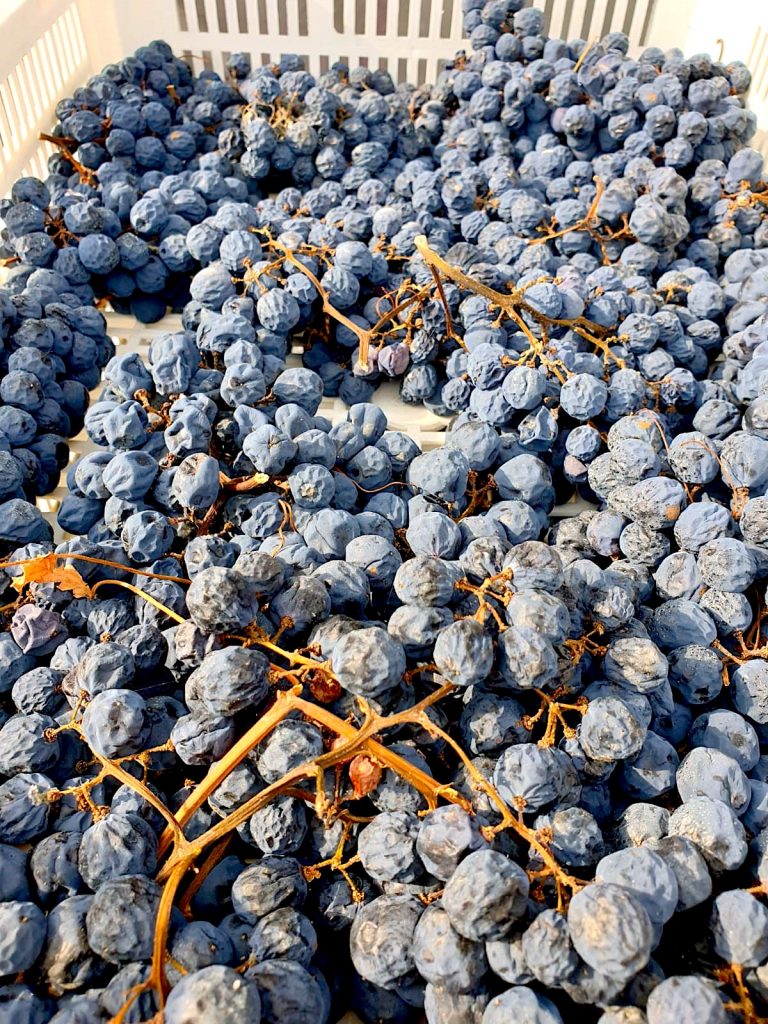Lorenzo Guerrini, Luca Calamai, Giulia Angeloni, Piernicola Masella Alessandro Parenti
Minor oenological practices are widespread in wine producing countries and regions. Almost every traditional winemaking area developed its distinctive oenological method, resulting in wines with peculiar characteristics. However, they are often very little known outside the specific geographical area where they were developed. The cultural heritage, the pedo-climatic conditions, the inherent characteristics of the grape cultivars, and many other factors associated to a specific winemaking geographical area greatly contributed to the development of several minor oenological practices, resulting in wines with unique features. The distinctiveness of wines represents their first clearly recognizable strength. In the modern wine panorama, mainly characterized by international taste wines, the rediscovery of these traditional methods can exploit wine typicality providing unique products to the market.
The rediscovery of minor winemaking practices could significantly contribute to the oenological progress. These techniques have often been developed to overcome a particular problem occurring in a specific geographical area. Thus, the studying of minor oenological practices could suggest simple winemaking solutions that can be applied in different situations to solve similar problems. Since the traditional winemaking techniques were developed to face the environmental issues in different geographical areas, their study could help in facing face similar challenges in different areas.
Governo all’uso Toscano (GUT) is a winemaking technique developed in Central Italy to improve the aromatic and structural quality of wines. In Tuscany, 2 Protected Designation of Origin wines and 1 Protected Geographical Indication can use this technique for red wine production (Chianti, Chianti Classico, and Colli della Toscana Centrale). The GUT is also found in the Marche and Umbria regions, where it is used on Verdicchio white wines. Similar oenological methods can be found along the entire Italy, from the Ripasso della Valpolicella (Veneto) to the Passolata di Pantelleria (Sicily).
The GUT winemaking practice consists of adding a certain amount of withered grapes to a freshly produced wine (Figure 1). The inclusion of these grapes caused biochemical transformations into the developing wine by triggering an additional fermentation process. The high ethanol (>10%) medium greatly changed the solubility of grape compounds and their kinetics of solubilisation. Moreover, grape skins cell wall and membrane permeability and/or integrity are modified at this ethanol concentration. Furthermore, the addition of withered grapes introduced sugars into the finished wine where no residual sugars were present. As a result, during the second alcoholic fermentation, microorganisms on grape berries will compete with the yeast population residual from the first alcoholic fermentation, and with other microbial species eventually found in the winemaking environment. These distinctive factors, together with the importance of preserving oenological savoir faire and tradition, make the GUT an interesting case study.

To understand the effect of GUT, we performed a dedicated experiment at laboratory scale. Five stainless steel tanks of 5 L nominal capacity were filled with 3.5 L of the base Chianti wine. Then, 5 levels of withered grapes were tested: 0g (GTU0% – Control), 175 g (GUT5%), 350 g (GUT10%), 525 g (GUT15%), and 700 g (GUT20%). All tanks were inoculated with 1.5 g of a commercial yeast. All the alcoholic fermentations ended after 3 weeks. Trials were performed in three replicates, hence a total of 12 GUT (3 for each level) and 3 Control wines. Wines were analysed for: ethanol, tartaric acid, malic acid, citric acid, lactic acid, A420, A520, A620, colour intensity, hue, and volatile profile.
The GUT significantly changed the chemical profile of wines. Ethanol slightly increased in all GUT samples. A linear increase was found between the control (12.00±0.10%) and GUT20% (12.80±0.13%) wines. The addition of withered grapes to a wine enhanced the colour in term of yellow, red and blue components. Colour intensity showed the same increase, and higher hues were found in GUT wines. Thus, the GUT shifted the wine colour to yellowish tone. A significant decrease in the wine acidity and the occurrence of the malolactic fermentation were obtained adopting the GUT. All the 12 GUT samples had malolactic fermentation, while the 3 Control did not. The induction of the malolactic fermentation was, historically, one of the drivers promoting the diffusion of the GUT. The environmental conditions in Tuscany at the end of alcoholic fermentation (usually in October) did not allowed the spontaneous malolactic fermentation to occur; indeed, it requires higher temperatures usually reached during the following spring. The addition of GUT provided the conditions required to perform the malolactic fermentation in October, protecting the wines from risks of microbial spoilages. In this perspective a traditional method could contribute to the scientific debate on the development of reliable method to induce malolactic fermentation, and to the study of the role of indigenous bacterial microflora in enhancing regional differences in wines.
The GUT significantly changed the wine volatile profile. GUT involved the three main classes of compounds responsible for primary aroma in Sangiovese: (i) terpenoids (p-cymene, α-terpineol, β-ionone), (ii) aromatic alcohols (benzyl alcohol, 2-phenylethanol) and (iii) C6 alcohols/aldehydes (1-hexanol, Z-3hexen-1-ol). These changes could be ascribed to the grape withering. Furthermore, GUT changed the secondary aroma as combined result of withering, alcoholic and malolactic fermentations.
The GUT deeply affected the wines chemical composition, independently by the percentage of withered grape added. The lower addition showed the most interesting result. Indeed, GUT5% allowed to produce a wine with distinctive characteristics (Figure 2), minimizing the operational costs and risks.

Traditional winemaking practices could be a rich source of inspiration for modern oenology. Although these methods were developed in a specific context, they can greatly contribute to face modern oenological challenges. Finally, their study could help to preserve wine heritage and culture.
See all at:
Guerrini, L., et al. (2020) Qualitative effects of the addition of withered grapes to a freshly produced red wine: the traditional governo all’uso toscano practice. Australian Journal of Grape and Wine Research.

Dr. Lorenzo Guerrini, Agronomist, PhD, is currently working at the Università degli Studi di Firenze (Italy) in the biosystem engineering field. He holds his PhD with a thesis on the stabilization techniques for extra virgin olive oil. Since 2011 his work has been focusing on food engineering and on the development of innovative machines and devices for food processing. The interactions between innovative processing machines and the quality of several food matrices, mainly wine, olive oil, coffee and cereal products are the main topics of his scientific researches.

